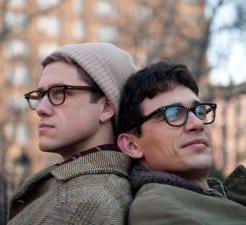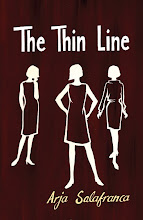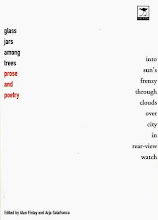At the moment South Africa is experiencing a boom in book publishing. New writers are constantly minted and the stories they tell, whether in fiction or non-fiction, are as diverse as they are exciting. It all bodes well for readers as it means a greater choice of books to choose from. It also means that books compete fiercely for buyers’ attention. Which is why book reviews are regarded as essential maps to help buyers navigate aisles at bookstores.
With such vigorous book publishing taking place one would imagine that book reviews get prominent space in our media. Not so, say writers and journalists Arja Salafranca and Melinda Ferguson. Salafranca, a fiction writer, poet and editor, says: “Unfortunately book pages in some newspaper are shrinking; some papers have got rid of book reviews altogether, which is a huge pity.
"But we do still have papers (such as
Mail & Guardian) as well as magazines (such as
Wordsetc) and online journals (such as
LitNet and
SlipNet that give literary matters space and offer room for debate.”
Ferguson, a books editor at
True Love magazine, agrees: “There are very few magazines and newspapers that dedicate meaningful space and respect to books, authors, book launches and so on. Perhaps it’s a reflection on what the population wants, for whom, if we look at stats, reading is not a top priority.”
Why are book reviews so important in the first place? What is their function? “Essentially, a review should serve to tell the audience whether a book is worth buying and why, without giving away too much of the plot. The nature of reviews varies. Serious literary or academic journals often run longer and more analytical reviews. By contrast, reviews in the mass media lack deeper analysis because of a shortage of space,” Salafranca says.
When reviewing books, neutrality flies out of the window. Whether in favour or against the book, opinions matter. “I like opinionated reviews, where the reviewer has a strong stance. It doesn’t matter whether I agree with him/her or not. I like these reviews because they encourage readers to see things in a new way,” Ferguson says.
On the other hand, reviewers can miss the point or can have opinions loaded with venom. Ferguson, who wrote two bestselling autobiographical books on overcoming drug addiction,
Smacked and
Hooked, knows this phenomenon too well. She vividly remembers the reviews
Smacked got when it came out in 2006.
“Hardcore reviewers tended to get stuck in the horror [of the book]. Very few got further than the sensational aspect and reviewed it as a literary work. I was disappointed. There was even one reviewer who had some connection to my ex husband (who was in the book) and his family. She got quite personal and went on and on about how much I had hurt people and so on. She didn’t stick to the book at all. I was pretty irritated. But
Smacked has sold brilliantly. I guess all the attention, whether the reviews were accurate or not, have worked for me in terms of sales.”
But, can a bad review truly harm book sales? Is the reading audience out there easily swayed by the subjective opinions of a reviewer? While acknowledging that book reviews serve as a “useful” tool to generate publicity, Salafranca believes that, ultimately, word of mouth and advertising are more potent drivers of book sales, which can help counter negative book reviews. “People may occasionally be put off by a bad review, but then again they may go into a bookshop and pick up the badly reviewed book and read it for themselves and think to themselves, ‘Hmm, I think I like the sound of this. To hell with whatever so-and-so said in the review.’ It’s important to have local books in our bookshops so that people can explore gems that may not have attracted publicity.”
It stands to reason that a vibrant book publishing environment needs quality book reviews. For Ferguson, book reviewing takes more than just going to Google, as some local reviewers are wont to do, or merely reading the back jacket of a book so as to regurgitate. She acknowledges, however, that “there are some very fine reviewers out there who do the job brilliantly”. She says: “I think
Hooked is a better written and constructed book but I don’t feel enough reviewers have seen that ... But as a writer you never really feel like all people get you and you can’t force people to look at your book in the way you would like them to. As writers we land up being quite pathetically passive, panting for a drop of attention...”
Salafranca, who wrote a collection of stories
The Thin Line in 2010 and recently edited
The Edge of Things: South African Short Fiction, keenly follows reviews of her work. “Sometimes they focus on aspects you’d never considered. Other times you do feel they are missing the point. It’s all so subjective. We interpret anything from where we are standing, and our mood influences our responses to a particular piece. I’m generally happy that my work has attracted attention and reviews - and favourable ones. I am ready too to learn from what has been said or might be said.”
(Published in Rhodes Journalism Review, 2011)
















.jpg)
